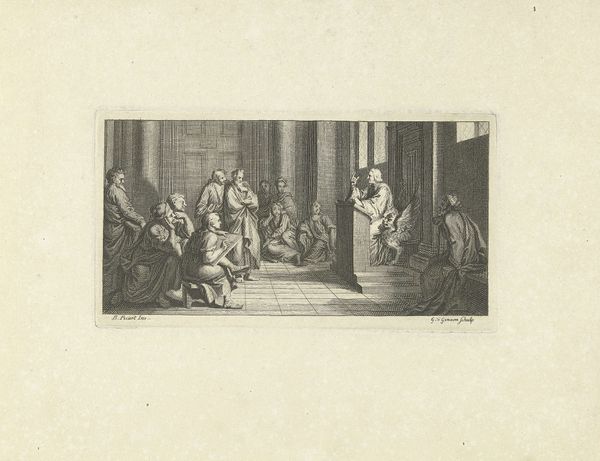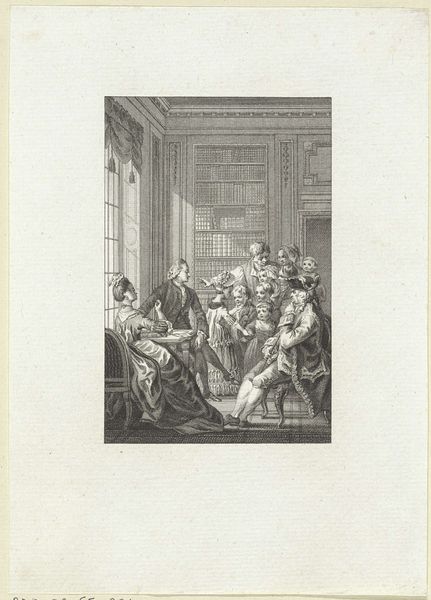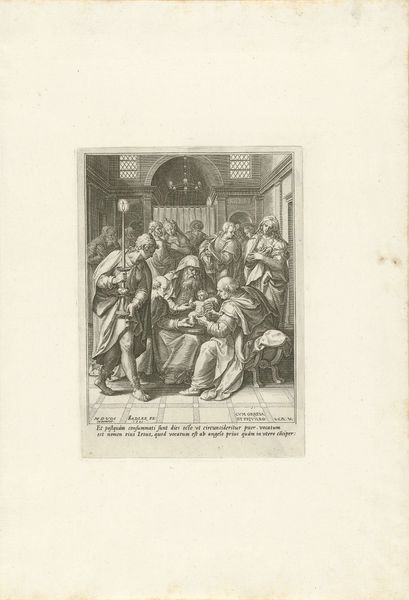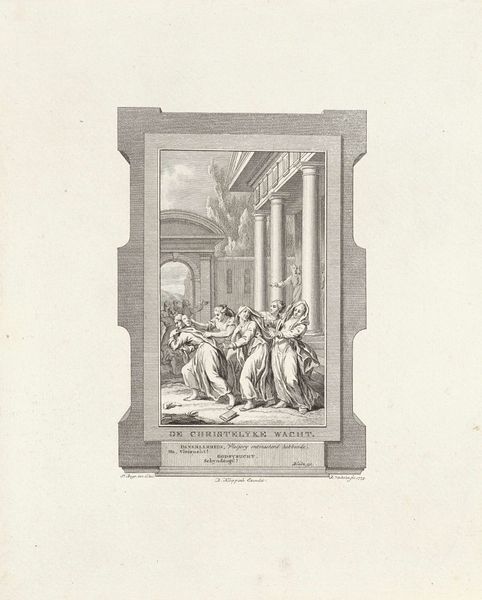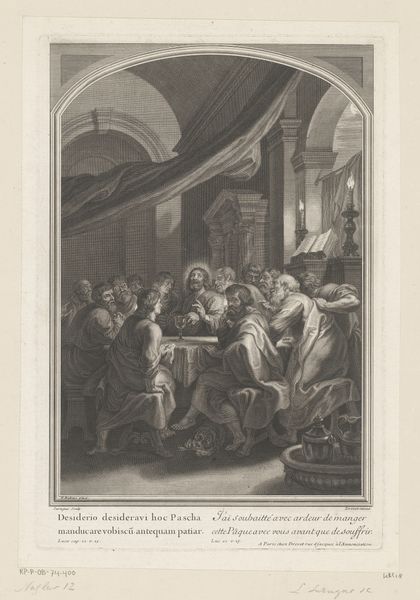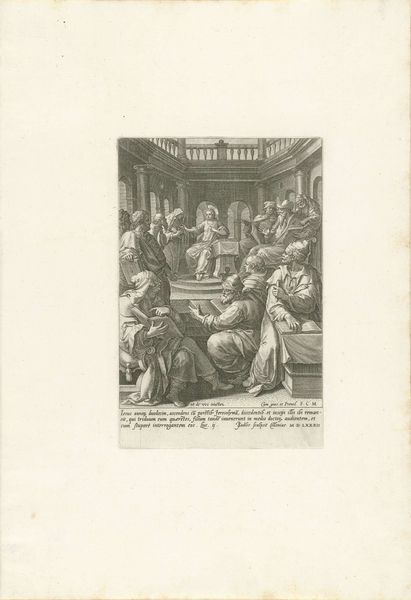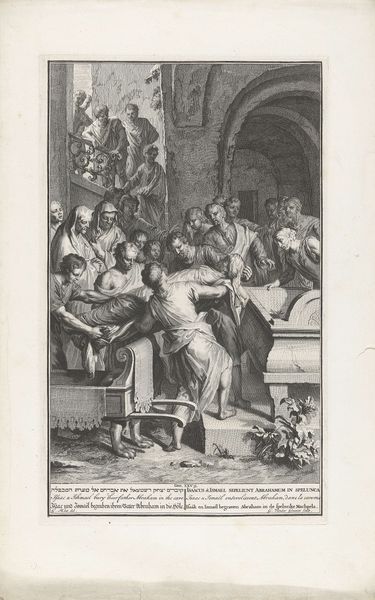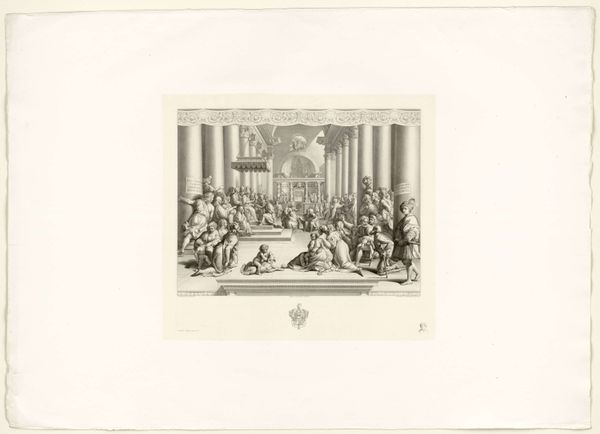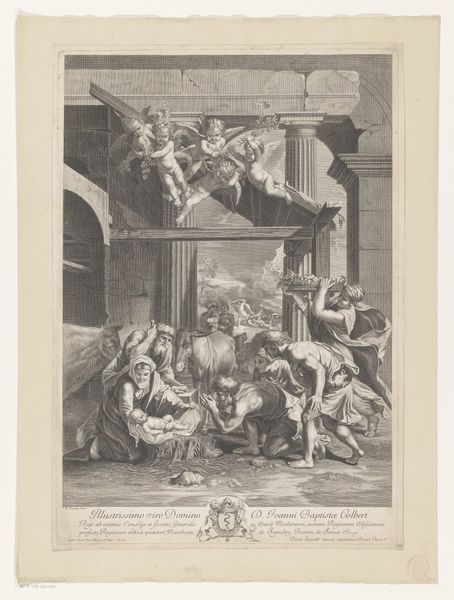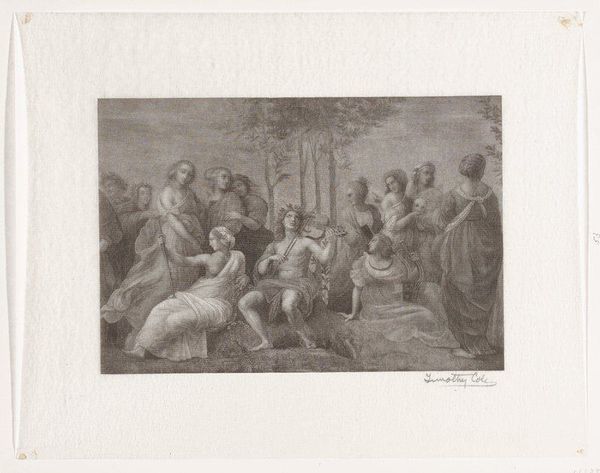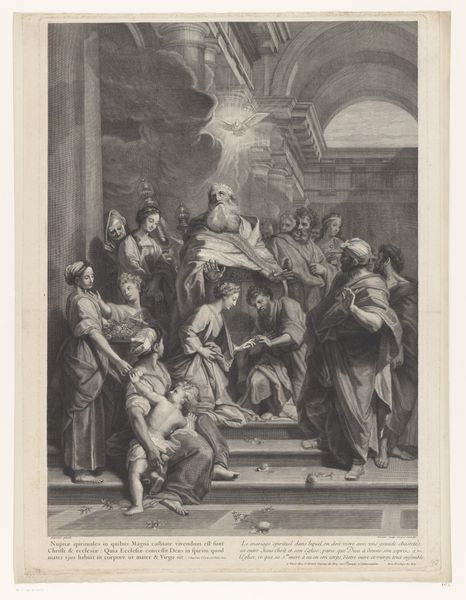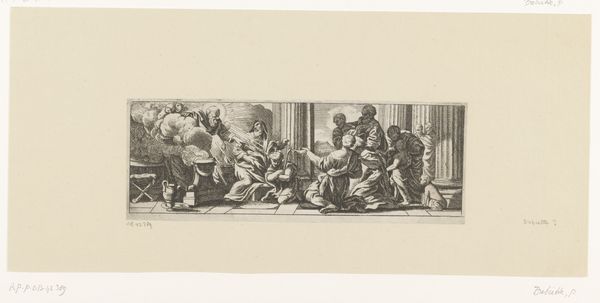
print, intaglio, engraving
#
aged paper
#
baroque
# print
#
intaglio
#
old engraving style
#
perspective
#
genre-painting
#
history-painting
#
engraving
Dimensions: width 178 mm, height 95 mm
Copyright: Rijks Museum: Open Domain
Curator: This print, entitled "Preek van een priester," or "Sermon by a Priest," is attributed to Gilliam van der Gouwen and dates roughly from 1670 to 1740. It's currently housed in the Rijksmuseum. The medium is intaglio, an engraving on aged paper. Editor: It strikes me immediately as a snapshot of social hierarchy and power. Look at the architectural setting and the clearly defined spaces; the priest elevated, the congregation below in various states of attentiveness or perhaps, even, subservience. Curator: Yes, the architectural space is carefully constructed, emphasizing the priest's position of authority. Perspective is really at play here. Beyond the visual narrative of power dynamics, the method of its production and potential market circulation fascinate me. As a print, how many copies existed, and for whom was it produced? Was it accessible to the working class, or was it aimed at reinforcing the established order for those already in power? Editor: It makes one consider who controlled the image production and dissemination back then. The artist and the institutions or individuals who commissioned the artwork held considerable power, dictating narratives and shaping public opinion through carefully crafted imagery. Curator: The material conditions – the engraver’s labor, the cost of paper and ink, the network of distribution – all factored into the artwork’s impact on society. What social messages were being explicitly or tacitly promoted? Did its consumption differ according to the viewer's socio-economic location and political position? The labour behind this aged print is now clearly apparent. Editor: And think about the venues where viewers may have engaged with such imagery. From private collections to public displays, the artwork took on distinct meaning within differing settings. It encourages questioning the role that such images played in confirming social structures and accepted norms. Curator: Precisely. By examining the production, circulation, and consumption of this print, we reveal a complex web of power relations that not only reflected society at the time, but actively participated in creating it. Editor: I am moved to see a baroque sermon presented in such a stark manner. The narrative, when contextualized, takes on additional meaning as an artifact representing the intersection of class and power in art.
Comments
No comments
Be the first to comment and join the conversation on the ultimate creative platform.
